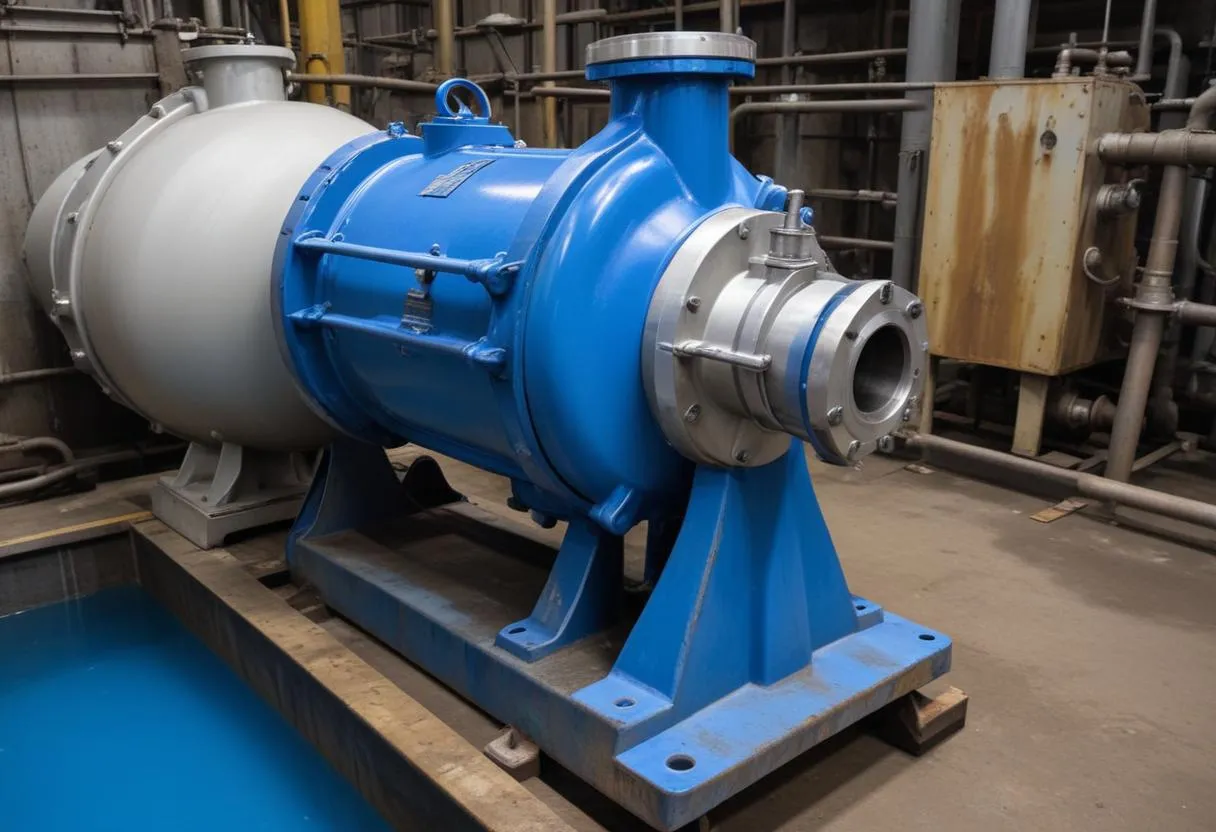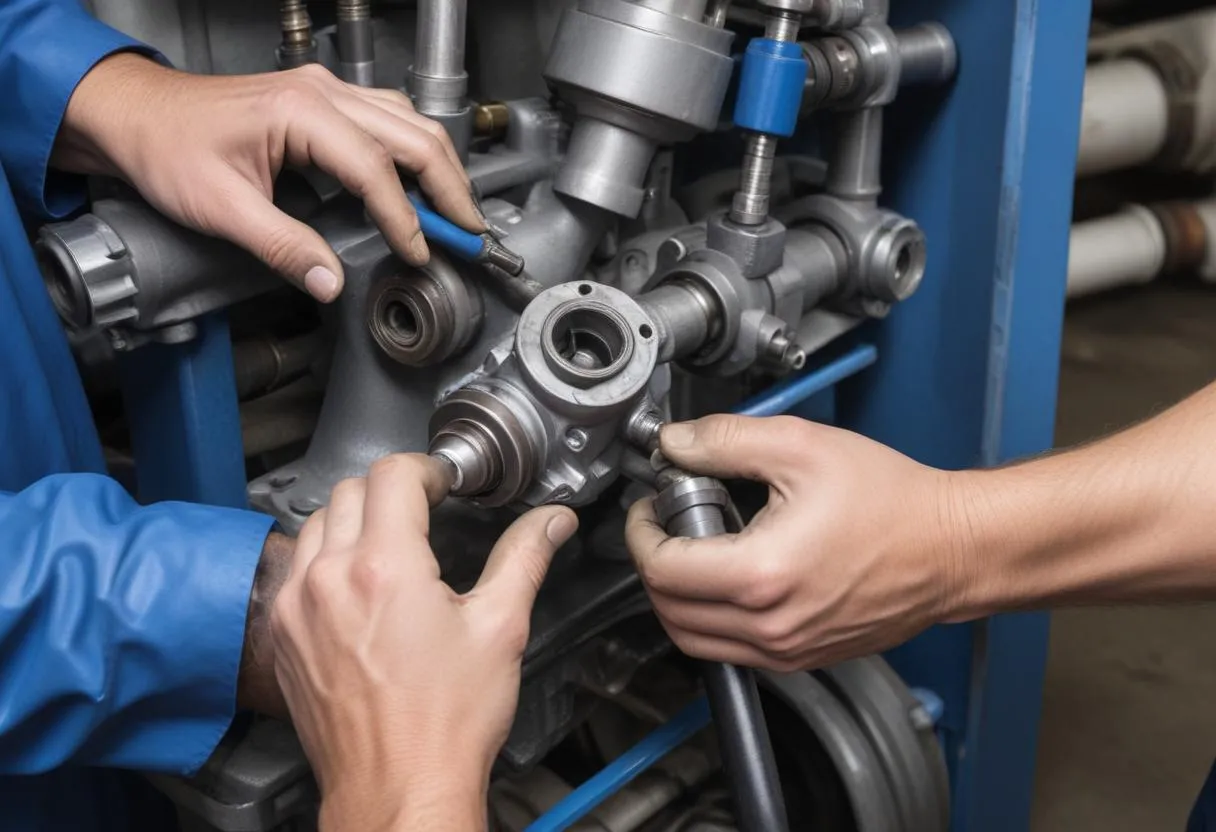 Chemical pumps designed specifically for handling corrosive materials must be crafted from materials that can withstand the damaging effects of aggressive chemicals while maintaining functionality and efficiency. Several types of pumps are commonly used in industrial settings where corrosive fluids are handled.
Chemical pumps designed specifically for handling corrosive materials must be crafted from materials that can withstand the damaging effects of aggressive chemicals while maintaining functionality and efficiency. Several types of pumps are commonly used in industrial settings where corrosive fluids are handled.
Centrifugal Pumps: Centrifugal pumps are among the most popular chemical pumps due to their simplicity, efficiency, and versatility. They operate using a rotating impeller to generate centrifugal force, which moves the fluid. For corrosive materials, these pumps are often made from stainless steel, Hastelloy, titanium, or even plastic materials such as polypropylene or PVDF which can tolerate a wide range of chemical exposures.
| Material | Common Applications |
|---|---|
| Stainless Steel | Acids, bases, solvents |
| Hastelloy | Strong oxidizers, chloride solutions |
| Titanium | Sea water, chlorinated hydrocarbons |
| Polypropylene | Mild acids, bases |
| PVDF | Halogenated solvents, strong acids and bases at higher temperatures |
Magnetic Drive Pumps: These pumps remove the need for a traditional sealing mechanism by using magnetic coupling between the motor and the impeller. They are ideal for handling hazardous or toxic chemicals because they minimize the risk of leaks. Constructed from similar materials as centrifugal pumps, they can handle a variety of corrosive liquids.
Diaphragm Pumps: Also known as air-operated diaphragm pumps, these devices use compressed air as a power source, making them highly beneficial in explosion-proof environments. The diaphragm material can include PTFE, Viton, or even rubber, depending on the chemical compatibility requirements.
- PTFE: Highly resistant to most chemicals including acids and solvents.
- Viton: Suitable for oils, fuels, and some mild acids.
- Rubber: Generally used for less aggressive materials.
Gear Pumps: Gear pumps are suitable for high-viscosity fluids and work by meshing the gears to pump the fluid. Available in materials such as stainless steel and other corrosion-resistant alloys, they excel in applications where precision dosing of corrosive liquids is required.
Peristaltic Pumps: These pumps are frequently used for very aggressive chemicals because the fluid only contacts the tubing material, not the pump mechanism. Tubing materials can vary significantly in regards to chemical resistance, including options such as silicone, Tygon, and Norprene.
- Silicone: Versatile under a wide temperature range and generally chemically inert.
- Tygon: Common choice for harsh laboratory environments.
- Norprene: Known for its durability and resistance to acids, alkalis, and a variety of solvents.
Selecting the appropriate pump for a specific chemical application is crucial for ensuring longevity, safety, and efficiency. Users must consider not only the chemical resistance of the pump materials but also other attributes like flow rate, pressure capabilities, and temperature considerations.
Safety protocols for operating chemical pumps
Safety protocols are paramount when operating chemical pumps to ensure the safe handling of hazardous and corrosive fluids. Adhering to stringent safety measures not only protects the operators but also ensures the longevity and efficient functioning of the equipment. Below are the essential safety protocols that must be observed in facilities using chemical pumps:
Personal Protective Equipment (PPE): Operators must wear appropriate PPE, including gloves, goggles, face shields, and chemical-resistant clothing. The specific requirements for PPE vary depending on the chemicals being handled. Ensuring that all personnel are adequately equipped minimizes the risk of chemical exposure.
Chemical Handling Training: Personnel must be thoroughly trained in the proper procedures for handling chemicals, including the understanding of Material Safety Data Sheets (MSDS), which provide detailed information on the chemicals in use. Training should also include emergency response techniques and first aid procedures in case of accidental exposure.
Regular Inspection and Testing: Chemical pumps and associated equipment should undergo regular inspections to ensure they are operating correctly and are free from defects. Special attention should be given to seals and gaskets, as these components can degrade over time and result in leaks or exposure.
- Mechanical Integrity Tests: Routine checks to assess the structural soundness and functionality of the pump.
- Leak Detection Tests: Specific tests designed to identify any signs of leakage, which is crucial for hazardous or highly corrosive chemicals.
Ventilation Systems: Adequate ventilation is critical in spaces where chemical pumps are used. Systems should be designed to mitigate the accumulation of hazardous fumes or vapors. Regular checks and maintenance of ventilation systems are necessary to ensure they function effectively.
Emergency Procedures: Facilities must have established emergency protocols in case of chemical spills, leaks, or exposure. This includes having accessible spill containment kits and neutralizing agents, as well as clear instructions for evacuation routes and assembly points.
- Immediate Facility Lockdown: To prevent the spread of contamination in case of a major spill or leak.
- First Response Actions: Specific steps that trained personnel should take immediately following a chemical accident.
- Medical Emergency Procedures: Predefined actions for treating chemical exposure, including necessary first aid and medical care.
Regular Safety Audits: Conducting safety audits periodically to evaluate the effectiveness of safety protocols and making necessary adjustments or improvements. Audits help in identifying potential weaknesses in safety procedures before they can lead to accidents.
Implementing and adhering to these safety protocols ensures that chemical handling and operations involving erosive and hazardous chemicals are conducted with the highest standards of safety and efficiency. By doing this, facilities not only protect their employees but also prevent equipment damage and reduce downtime, ensuring continuous and reliable operations.
Maintenance and troubleshooting of chemical pumps
 Effective maintenance and troubleshooting of chemical pumps are essential for ensuring operational efficiency and increasing the lifespan of the equipment. Here we discuss some key maintenance procedures and common troubleshooting techniques.
Effective maintenance and troubleshooting of chemical pumps are essential for ensuring operational efficiency and increasing the lifespan of the equipment. Here we discuss some key maintenance procedures and common troubleshooting techniques.
Regular Maintenance Schedule: Establishing and adhering to a regular maintenance schedule is critical to prevent unexpected breakdowns and prolong the pump’s life. Maintenance tasks may include lubrication, seal replacement, and checks for wear and corrosion.
Inspection and Cleaning: Regular inspection of the chemical pumps helps identify any potential issues early. It is vital to clean the pump components thoroughly to avoid any build-up of residues that might lead to clogging or corrosion. Particular focus should be on vulnerable parts such as the impeller and the casing.
Lubrication: Proper lubrication of the pump’s moving parts prevents friction and wear, thereby enhancing the smooth operation and durability of the pump. It’s essential to use the type of lubricant recommended by the manufacturer, as some chemicals may react negatively with certain lubricants.
Seal Replacement: Seals are critical to preventing leaks and ensuring the safe operation of chemical pumps. They should be inspected regularly for signs of wear or damage and replaced according to the manufacturer’s specifications.
Gasket and O-ring Maintenance: These components must be checked regularly for integrity and replaced if they are found to be deteriorated. Chemicals can cause these parts to degrade over time, which might lead to leaks and exposure.
| Maintenance Activity | Frequency | Importance |
|---|---|---|
| Inspection and Cleaning | Monthly/Quarterly | High |
| Lubrication | As per manufacturer’s guidelines | High |
| Seal Replacement | Annually or as needed | Critical |
| Gasket and O-ring Check | Every 6 months | High |
Troubleshooting Techniques: When issues arise, effective troubleshooting can help identify and solve problems quickly, minimizing downtime. Here are some common problems and troubleshooting tips:
- Pump is not delivering fluid or has low flow: Check for clogs in the intake line, wear or damage to the impeller, and incorrect pump speed settings.
- Excessive pump noise or vibration: Inspect for misalignment, bearing failure, or imbalanced impeller. Ensure all mounting bolts are tightened securely.
- Pump is leaking: Examine seals, gaskets, and hose connections for deterioration or damage. Consider environmental factors such as temperature fluctuations that might affect the integrity of sealing materials.
- Pump overheating: Ensure there is adequate cooling and verify that the flow rate and pressure are within the specified range for the pump. Overheating can also be caused by running the pump dry, so ensure there is always sufficient fluid being pumped.
Regular training sessions for maintenance personnel are also vital in maintaining operational efficiency. Staff should be up-to-date with the latest maintenance techniques and understand the specific requirements and challenges associated with the types of chemicals being handled by the pumps.
By implementing a thorough maintenance program and employing effective troubleshooting strategies, the durability and reliability of chemical pumps handling corrosive and hazardous fluids can be significantly enhanced. This protocol not only ensures the safety of the operations but also optimizes the performance and extends the service life of the equipment.